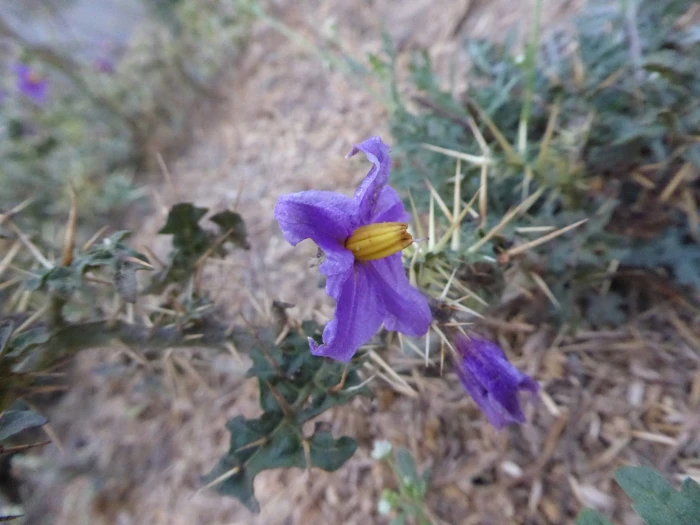Surattense Nightshade
(Solanum virginianum)
Surattense Nightshade (Solanum virginianum)
/
/

Ben Costamagna
CC BY 4.0
Image By:
Ben Costamagna
Recorded By:
Copyright:
CC BY 4.0
Copyright Notice:
Photo by: Ben Costamagna | License Type: CC BY 4.0 | License URL: http://creativecommons.org/licenses/by/4.0/ | Rights Holder: Ben Costamagna | Publisher: iNaturalist | Date Created: 2023-01-22T07:37:14-08:00 |

























Estimated Native Range
Climate Requirements for Springfield, Ohio
| This Plant | Your Site | Plant Suitability for Your Location | ||
|---|---|---|---|---|
| • Precipitation | 4" - 158" | 39" | Aquatic | Aquatic |
| • High Temp. | 70°F - 110°F | 85°F | Your summer temperatures are normal for this plant. | Excellent |
| • Low Temp. | -11°F - 74°F | 18°F | Your winter temperatures are normal for this plant | Excellent |
This plant should grow very well at your location without additional irrigation.
Summary
Solanum virginianum, commonly known as Surattense nightshade or yellow-fruit nightshade, is a perennial herb native to a variety of habitats including dry regions, scrublands, and open woodlands in India, the Himalayas, and Southeast Asia. It typically grows to a height of 20-28 inches (50-70 cm) with a spiny stem and branches. The leaves are ovate-oblong and sinuate (wavy-edged), and the plant produces blue-purple flowers that are followed by yellow or yellow-green berries. The flowering season extends through much of the year, depending on the climate.
Surattense nightshade is valued in traditional medicine for its purported therapeutic properties, and it is also used ornamentally for its attractive flowers and unique foliage. It is drought-tolerant and thrives in full sun to part shade, preferring well-drained soils. While it is relatively low-maintenance, gardeners should handle it with care due to its thorns. It is important to note that Solanum virginianum can be potentially invasive outside its native range, and its berries are toxic if ingested.CC BY-SA 4.0
Surattense nightshade is valued in traditional medicine for its purported therapeutic properties, and it is also used ornamentally for its attractive flowers and unique foliage. It is drought-tolerant and thrives in full sun to part shade, preferring well-drained soils. While it is relatively low-maintenance, gardeners should handle it with care due to its thorns. It is important to note that Solanum virginianum can be potentially invasive outside its native range, and its berries are toxic if ingested.CC BY-SA 4.0
Plant Description
- Plant Type:
- Height: 1.5-2 feet
- Width: 1-1.5 feet
- Growth Rate: Moderate
- Flower Color: Purple
- Flowering Season: Summer
- Leaf Retention:
Growth Requirements
- Sun: Full Sun, Part Shade
- Water: Medium
- Drainage: Medium
Common Uses
Bee Garden, Edible*Disclaimer: Easyscape's listed plant edibility is for informational use. Always verify the safety and proper identification of any plant before consumption.
Natural Habitat
Dry regions, scrublands, and open woodlands
Other Names
Common Names: Yellow Fruit Nightshade , Thai Green Eggplant , Yellow-Berried Nightshade
Scientific Names: Solanum virginianum , Atropanthe mairei , Solanum arabicum , Solanum armatum , Solanum diffusum , Solanum ferox , Solanum gula , Solanum jacquinii , Solanum jacquinii , Solanum macannii
GBIF Accepted Name: Solanum virginianum